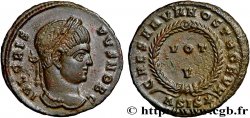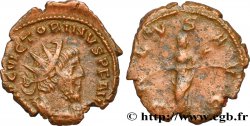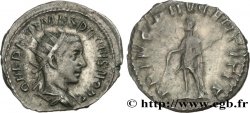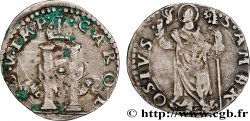Live auction - brm_498309 - CRISPUS Centenionalis ou nummus
You must signin and be an approved bidder to bid, LOGIN TO BID. Accounts are subject to approval and the approval process takes place within 48 hours. Do not wait until the day a sale closes to register. Clicking on "BID" constitutes acceptance of the terms of use of cgb.fr private live auctions.
Bids must be placed in whole Euro amounts only. The sale will start closing at the time stated on the item description; any bids received at the site after the closing time will not be executed. Transmission times may vary and bids could be rejected if you wait until the last second. For further information check the Live auction FAQ
All winning bids are subject to a 18% buyer’s fee.
All winning bids are subject to a 18% buyer’s fee.
| Estimate : | 250 € |
| Price : | no bid |
| Maximum bid : | no bid |
| End of the sale : | 30 October 2018 15:16:37 |
Type : Centenionalis ou nummus
Date: 317-320
Mint name / Town : Nicomedia
Metal : copper
Diameter : 18 mm
Orientation dies : 12 h.
Weight : 3,62 g.
Rarity : R1
Officine: 1re
Coments on the condition:
Exemplaire de qualité exceptionnelle sur un petit flan épais. Portrait de Crispus de toute beauté avec son argenture. Revers finement détaillé. Magnifique patine avec des reflets dorés. Conserve l’intégralité de son brillant de frappe et de son coupant d’origine
Catalogue references :
Predigree :
Cet exemplaire provient de la collection du Docteur S
Obverse
Obverse legend : D N FL IVL CRISPVS NOB CAES.
Obverse description : Buste lauré, drapé et cuirassé de Crispus à droite, vu de trois quarts en avant (A*).
Obverse translation : "Dominus Noster Flavius Iulius Crispus Nobilissimus Caesar", (Notre Seigneur Flavius Jules Crispus très Noble César).
Reverse
Reverse legend : PROVIDEN-TIAE CAESS/ (PALME)|.A// SMN.
Reverse description : Jupiter nu debout de face, la chlamyde sur l'épaule gauche tenant un globe nicéphore de la main droite et un sceptre long de la gauche.
Reverse translation : “Providentiæ Cæsarum”, (À la Providence des césars).
Commentary
Avec l’intégralité de son argenture superficielle. Rubans de type 3. Ptéryges larges sous le paludamentum.







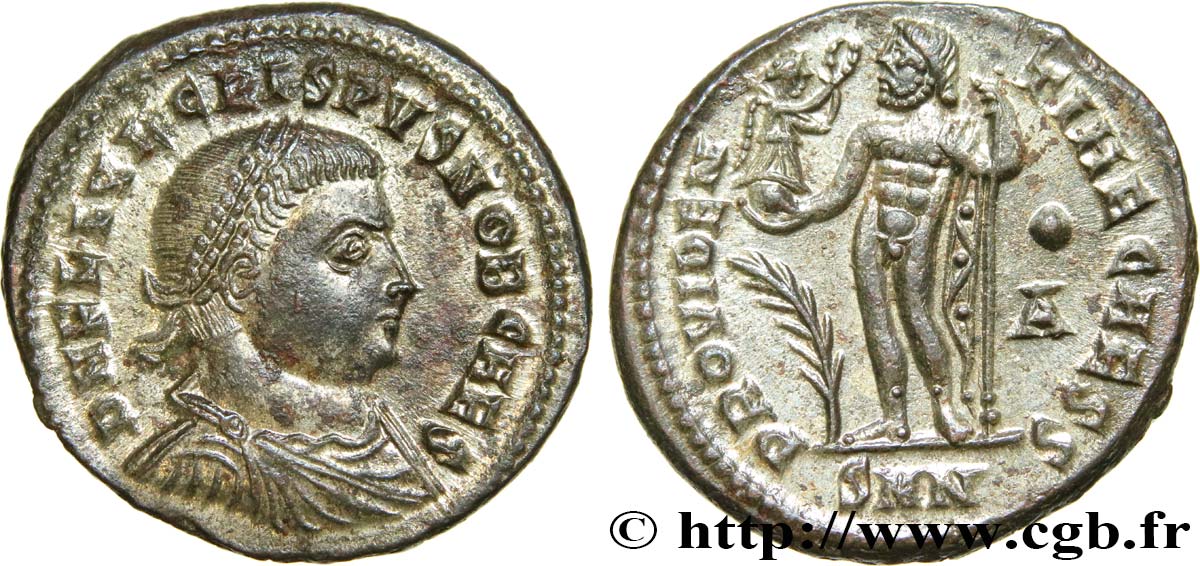
 Report a mistake
Report a mistake Print the page
Print the page Share my selection
Share my selection Ask a question
Ask a question Consign / sell
Consign / sell
 Full data
Full data

